Author: Noam Segal, Crypto KOL
Compiled by: Felix, PANews
Crypto KOL Noam Segal has released a survey report on the use of technical tools, with over 6,500 participants. The survey covers 13 categories, from AI assistants to project management to CRM (Customer Relationship Management). In addition to asking "what tools are used," it also inquires about people's favorite tools, which tools disappoint them, and what they would switch to if possible.
Among the respondents, 50% work in product roles, 11% are engineers, 10% are founders, and the rest are in other cross-functional roles, including marketing, design, and growth.
The breakdown of the company sizes of the respondents is as follows:
- About 45% work in companies with 1 to 100 employees
- About 25% work in companies with 101 to 1,000 employees
- About 20% work in companies with 1,001 to 5,000 employees
If companies with fewer than 1,000 employees are defined as "non-large enterprises," then about 70% of respondents work in startups or medium-sized companies, which can be considered an early adopter group.
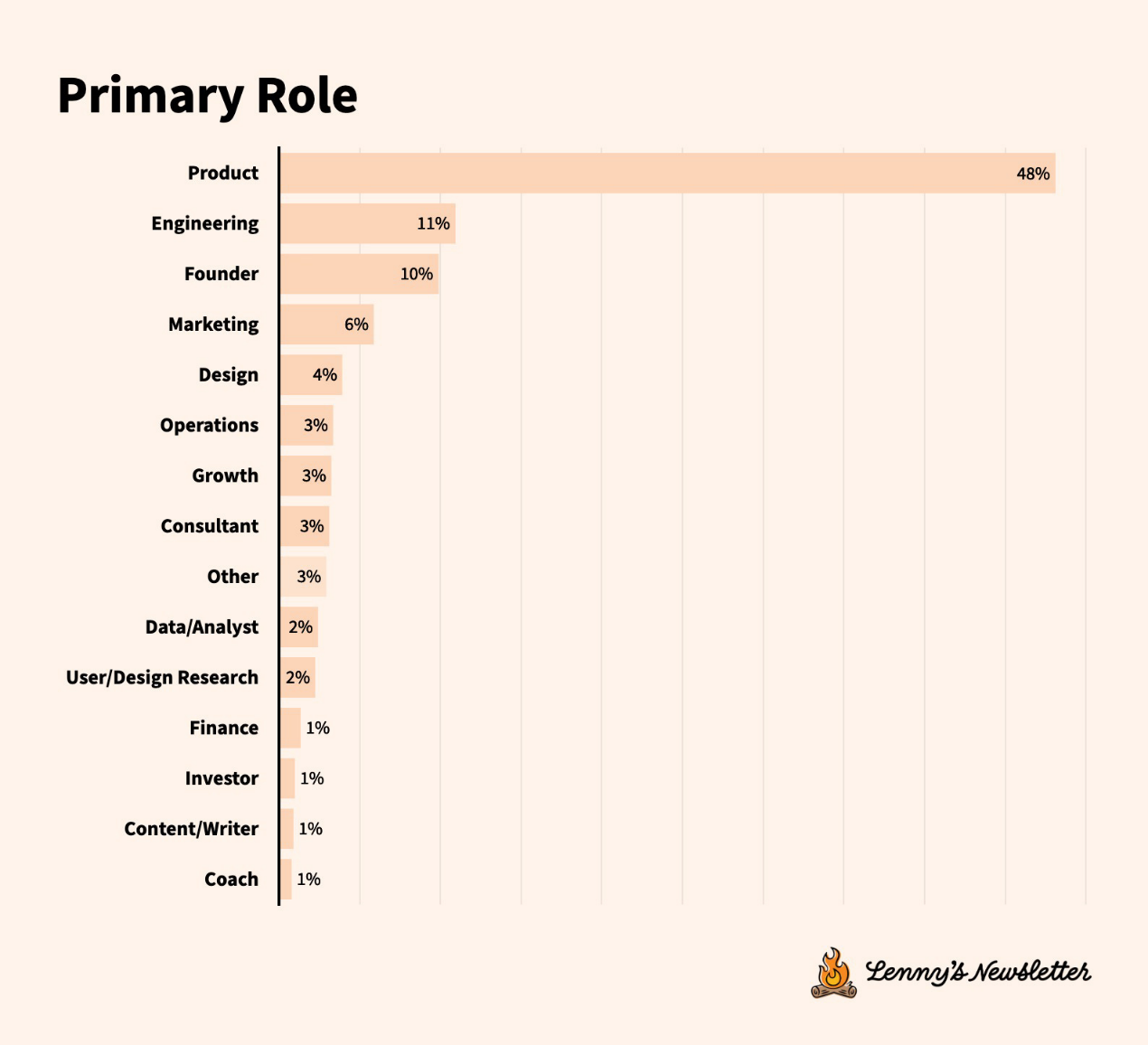
10 Key Takeaways:
- ChatGPT is far ahead. 90% of respondents frequently use ChatGPT. Only 35% use Claude, and 24% use Gemini.
- Cursor and other AI-native integrated development environment (IDE) tools are rapidly rising. 17% of respondents frequently use Cursor (launched two years ago). 10% of participants use v0 and Replit. 5% use Bolt.
- As the third most used tool overall, Slack continues to lead overwhelmingly. 72% of participants frequently use Slack, second only to ChatGPT and Gmail.
- 68% of participants use Jira, but it also ranks first on the "tools they wish they could use other options" list. Linear is the fastest-growing alternative to Jira, with over 10% of respondents using it.
- Figma Slides and Canva have become important tools in the presentation space, far surpassing Apple Keynote and approaching PowerPoint.
- Google Docs remains the preferred collaborative tool, but Notion is gaining momentum. Notion is seen as "all-purpose" and is catching up with other well-known tools, with 37% of respondents favoring Notion. Notion ranks second in project management after Jira and fourth in CRM.
- Figma remains the ubiquitous design tool. 97% of designers report using it as their primary design tool. Canva is still far behind but is catching up, thanks to the widespread acceptance of general design needs by marketers and founders.
- Miro continues to lead FigJam in the virtual whiteboard space, albeit slightly. However, FigJam is making progress.
- Notion and Slack are surprising contenders in CRM and customer support. It turns out that tool flexibility is very important, even in the face of strong existing enterprises.
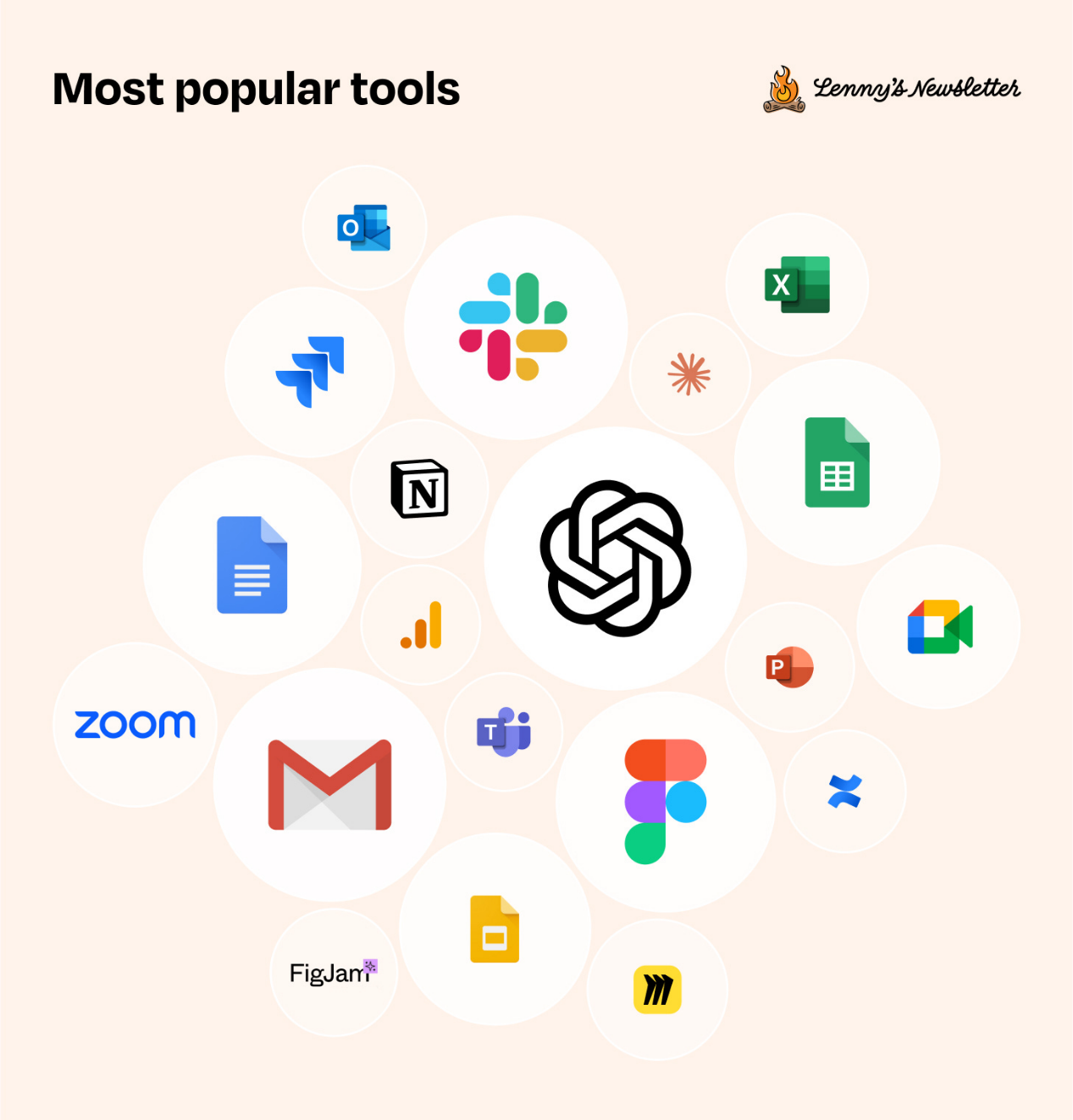
Three fundamental points: bundling, elegant design, and mixing. The following will elaborate on these.
ChatGPT is Far Ahead
What has been the most significant shift since 2022? AI tools have become as essential as laptops. Up to 90% of respondents frequently use ChatGPT. This is the most significant shift in the product team's tool stack recently. Respondents using ChatGPT outnumber those using Gmail (76%) or Slack (71%).
Interestingly, over 50% of respondents combine AI assistants for specific use cases:
- ChatGPT + Claude as thought partners
- ChatGPT + Perplexity for in-depth research
- ChatGPT + Gemini for Google Workspace integration
AI tools for specific roles are also becoming increasingly popular:
- 40% of engineers frequently use GitHub Copilot
- 21% of engineers adopt Cursor
- While tools like ChatPRD and Grammarly were not mentioned, they are gaining popularity.
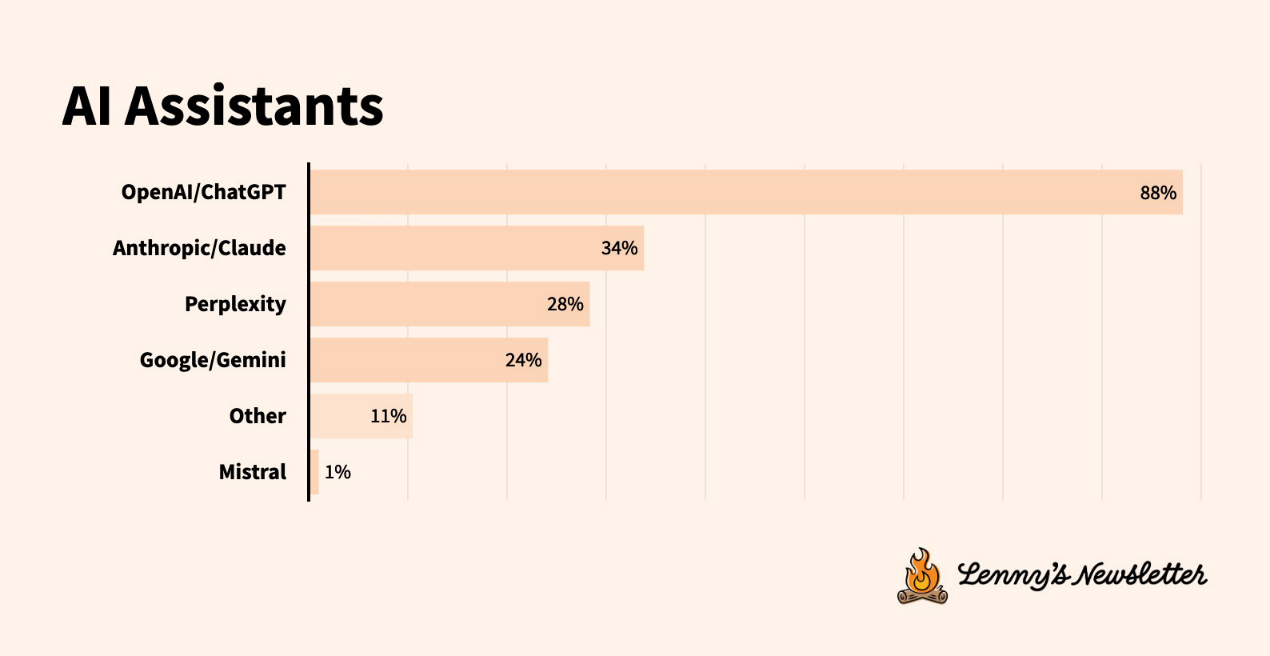
Cursor and Other AI Native IDEs Are Rapidly Rising
The second major shift in the tool stack is the emergence of AI-native development environments. Although tools like Cursor were launched only in 2023, they are already used by 17% of overall respondents (and 21% of engineers in the sample). Nearly 10% of respondents have used tools like v0 and Replit, and 5% are using Bolt. Among these, 60% are product personnel, and 40% are in other roles, including engineers, founders, consultants, marketers, designers, and user experience researchers. Most of these tools were launched over a year ago.
This rapid adoption indicates that developers are eager for tools that simplify coding and integrate into their coding workflows.
Nearly two-thirds of respondents use GitHub; however, the most popular "other" tool is GitLab, a major competitor to GitHub.
VS Code holds a significant position among engineers, with an adoption rate of 48%. The success of VS Code reflects its technical capabilities and Microsoft's success in developing the platform into a highly scalable, community-driven tool.
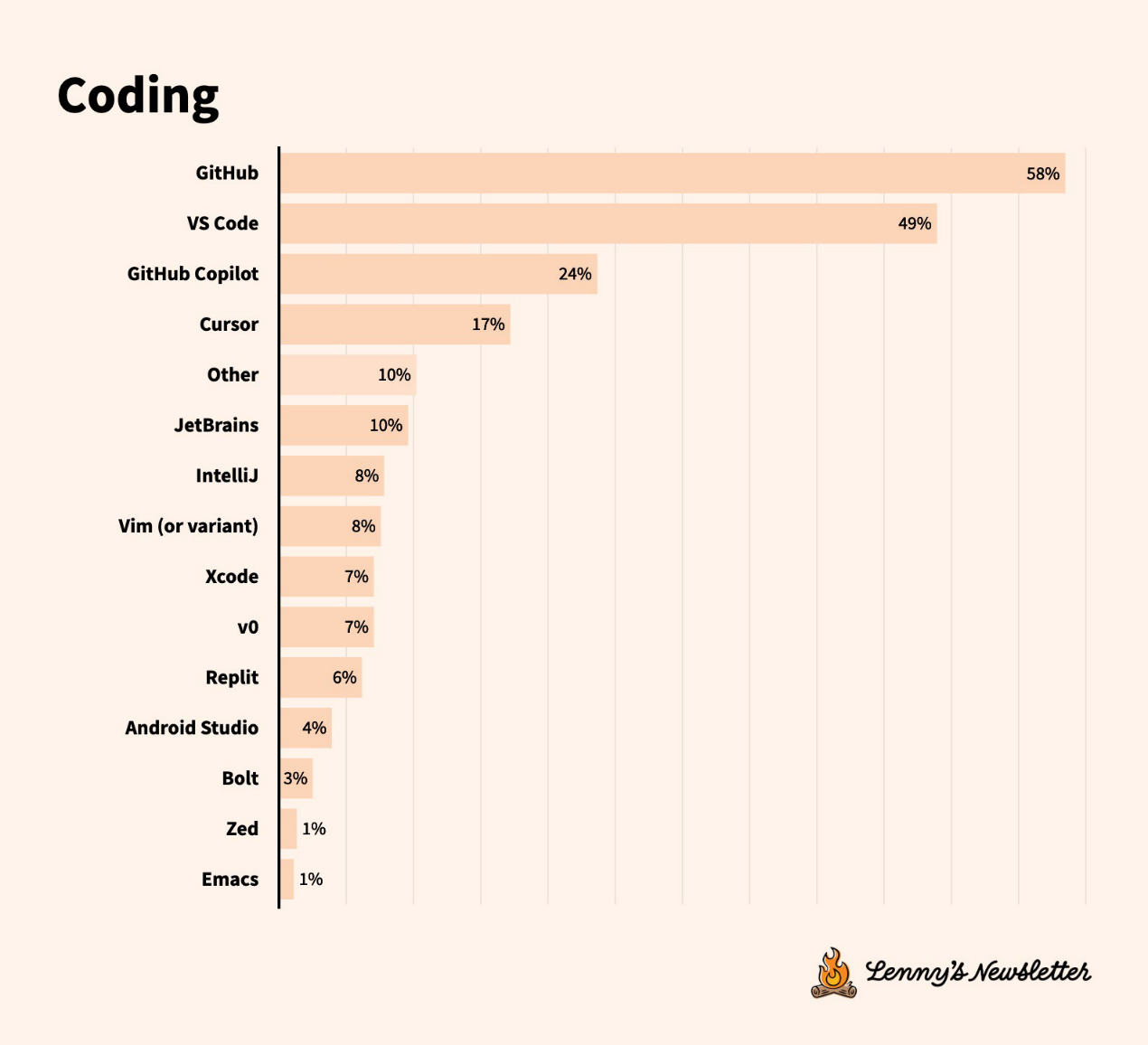
Slack as the Third Most Used Tool Continues to Lead
In previous surveys, Slack ranked first overall. This trend continues here, with 72% of respondents using Slack as their primary communication tool (second only to Gmail).
Technically, Microsoft Teams holds about 33% market share, but this is due to their enterprise bundling strategy, and actual usage is not as high as one might think. As noted in the section about switching tools, users do not enjoy using Teams.

Why does Slack stand out? Two hypotheses:
- People rate the user experience of Teams poorly. There are rumors that it is cumbersome, slow, and even "unusable." In terms of user experience, Slack wins.
- According to public data, Microsoft Teams is primarily used by non-technical companies and has been adopted by most large enterprises in the U.S. In contrast, Slack is mainly used by startups to medium-sized companies. Most respondents in this survey work in companies where Slack is dominant.
Another interesting finding: up to 20% of respondents use WhatsApp for work, and Telegram has also made strides in work communication, with 15% of respondents selecting "other tools" using Telegram daily. WhatsApp and Telegram were never designed as work communication tools, but a considerable number of people are using them as work communication tools.

The Jira Paradox and the Rise of Linear
This presents an interesting paradox: Jira dominates the project management market (53% of tech teams use it, the largest share), yet it ranks high on the "tools they want to switch from" list. Its deep integration with development workflows, bundling with other products, and enterprise-prioritized feature set lock teams in.
Feedback from respondents indicates that Jira is overly complex, difficult to learn, and use. One respondent said, "Jira is a mess, performs poorly, and is hard to maintain. It is complex, bloated with features, and has a terrible user experience." Another participant said, "Jira is too complex/bloated for our needs. I find it cumbersome and could simplify its features."
Linear: the fastest-growing alternative to Jira, founded in 2019, is already used by over 10% of participants (compared to only 10 mentions in the last survey). Respondents appreciate its modern, intuitive interface and streamlined workflow management. One engineering manager said, "Just switched from the Atlassian suite to Linear, which is more useful in terms of milestones and flexibility. It’s easier to filter views and build personal workspace setups." The popularity of Linear is comparable to that of Asana, founded in 2008.
Meanwhile, Notion has become the second most popular project management tool and the fourth most popular document tool, and it is increasingly popular as a CRM tool. Respondents consistently praise its flexibility. 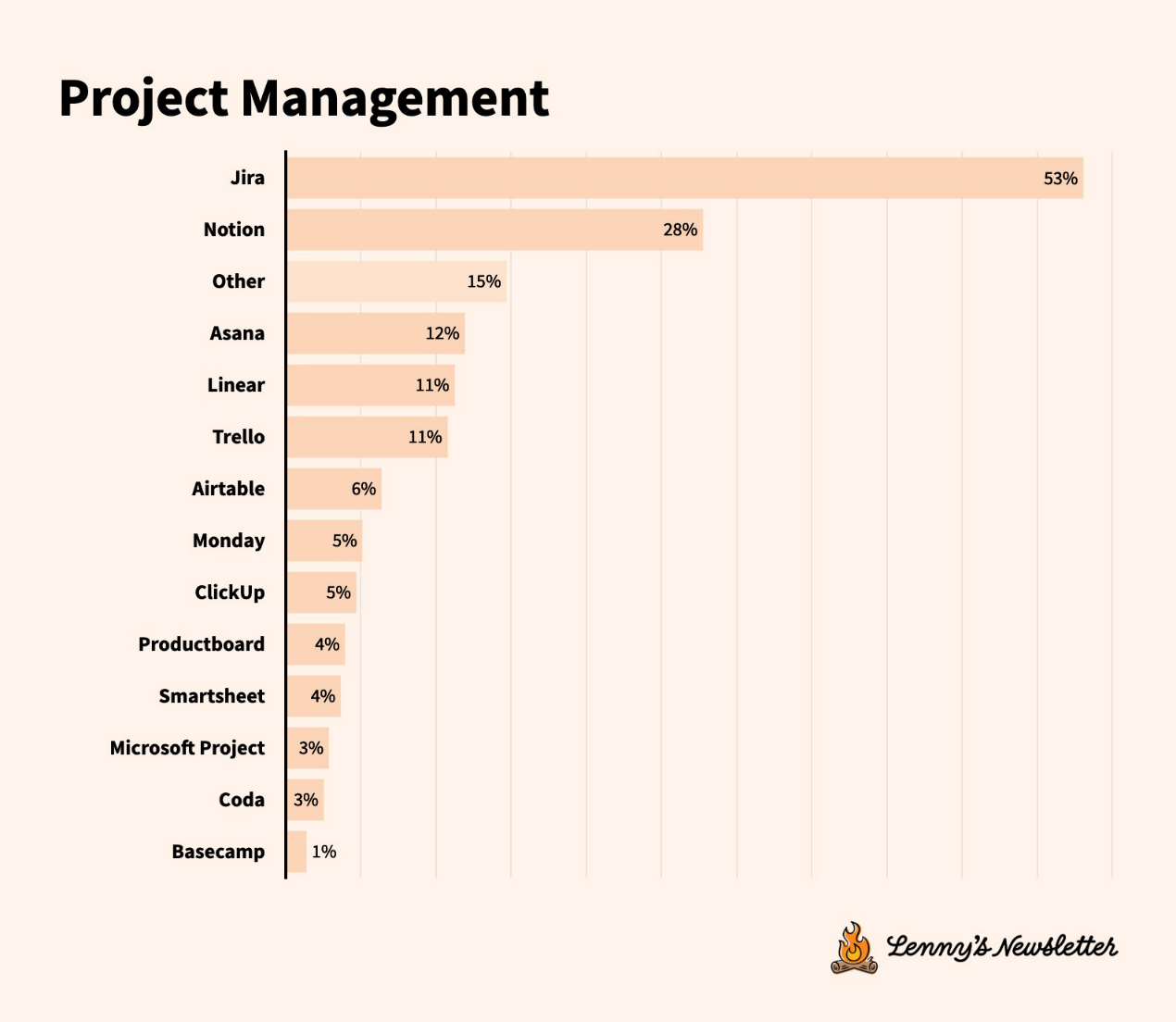
Figma Slides and Canva Have Become Important Tools in the Presentation Space
The way users create presentations is evolving in remarkable ways. Three distinct approaches have emerged, each showcasing a different narrative of how visual communication will be conducted in 2025.
First, there are the traditionalists. Google Slides and PowerPoint continue to dominate traditional presentation creation, doing what they have always excelled at.
However, design tools are quietly revolutionizing the presentation space. Figma and Canva have become strong competitors, with adoption rates nearly equal. This may surprise those who primarily view these platforms as design tools. What is driving this shift? Respondents consistently report that these tools offer something traditional presentation software cannot: the freedom to create without complexity.
AI has also entered the presentation arena. New tools like Pitch, Gamma, and Beautiful.ai are fundamentally rethinking how presentations are made. These tools do not start with a blank slide but instead use AI to shape your content into beautiful presentations. While these tools are still seeking a foothold in the market, early adoption signals suggest that the way slides are created will undergo a significant transformation.
Another trend appears in the data: Miro has consistently appeared in the "other" category, indicating that people are not just switching presentation tools but questioning whether they need traditional slides at all. The boundaries between presentations, whiteboards, and collaborative spaces are becoming blurred, and this may just be the beginning.
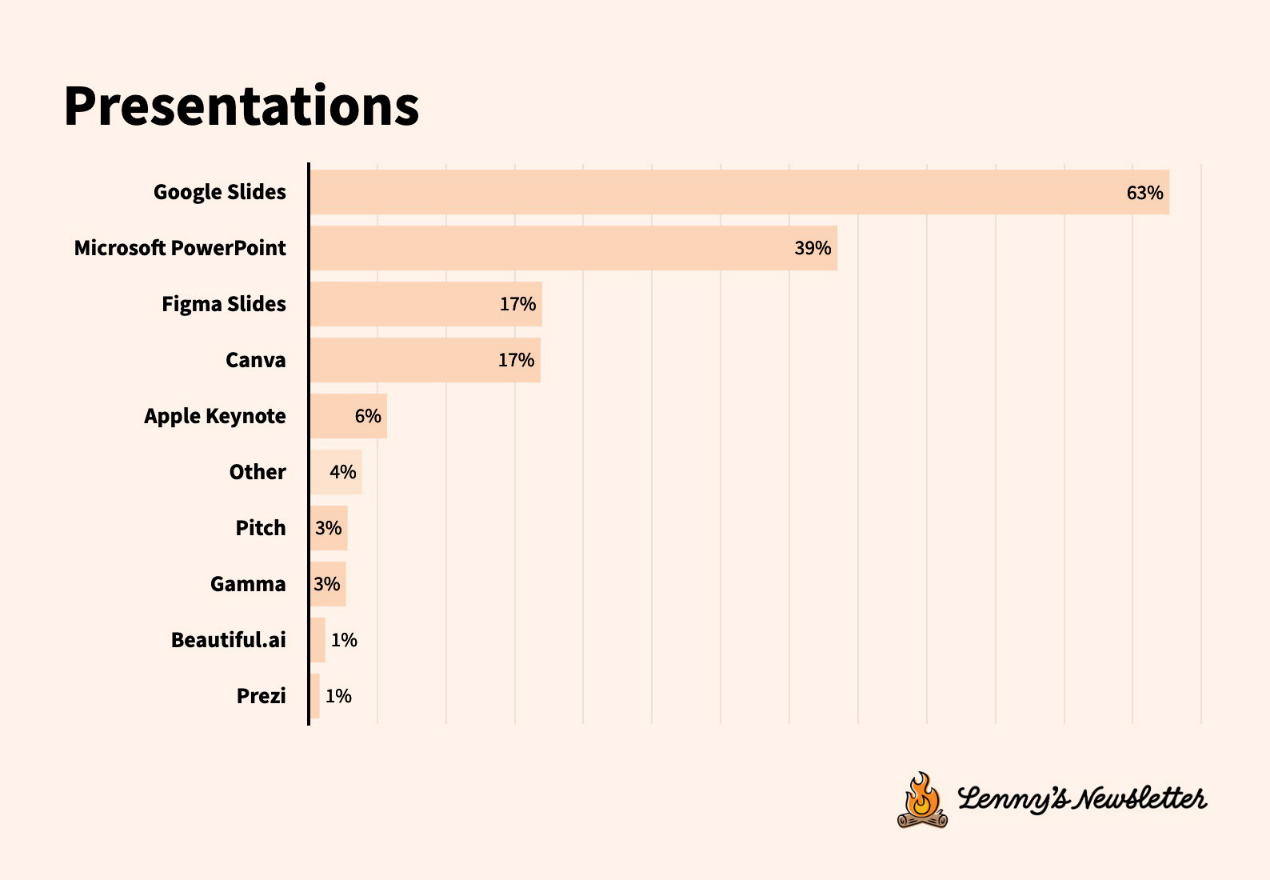
Google Docs Remains the Preferred Collaborative Tool, but Notion is Gaining Momentum
The document space is consolidating around three platforms, each meeting different needs:
- Google Docs remains the preferred choice for real-time collaboration.
- However, Notion, as a rising star, has gained an advantage in team wikis, project management, and documentation.
- Confluence remains popular among enterprise teams (despite some complaints).
Google Sheets continues to make strides in the spreadsheet domain, but Excel shows surprising resilience. Meanwhile, as many companies seek to integrate their tool stacks, tools like Evernote, Quip, Coda, and Dropbox Paper are gradually fading from view.

Figma Continues to Be the Tool for Design and User Experience
If you work in design, you are almost certainly using Figma. 90% of participants and 97% of designers use it as their primary tool.
An unexpected tool is Canva. While it does not directly compete with Figma for professional designers, it democratizes design for others. Product managers, marketers, and engineers are using Canva to create quick visuals without bothering their design teams.
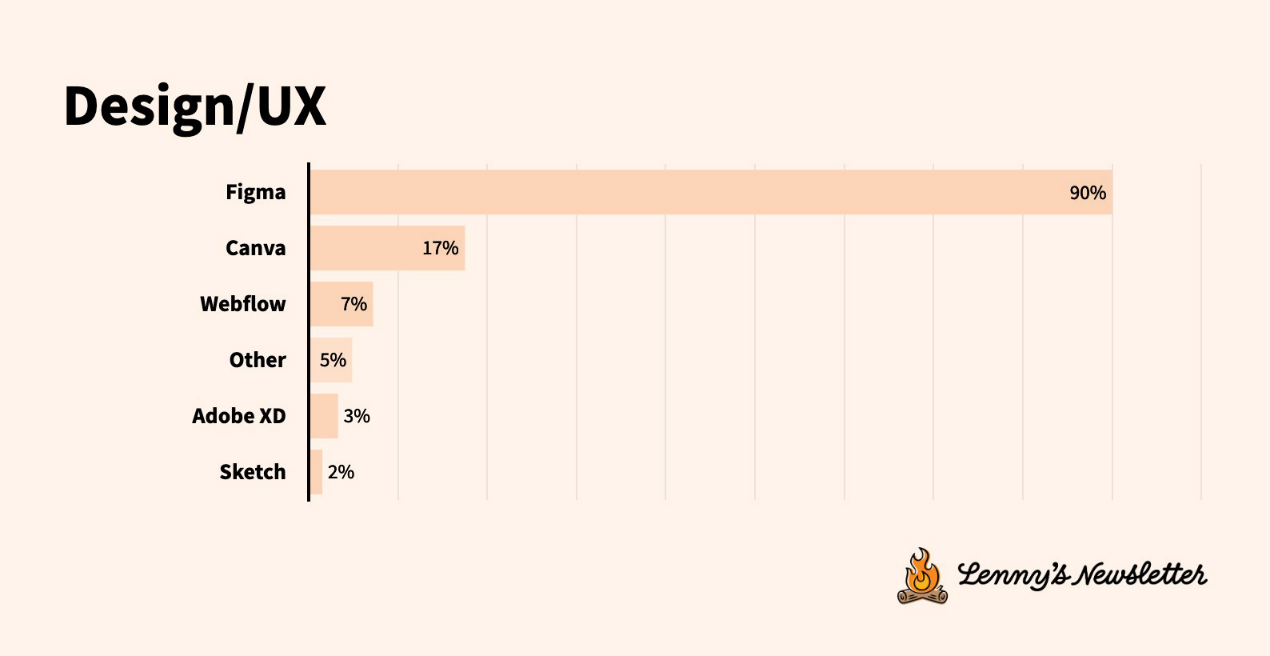
Miro Slightly Leads FigJam in the Virtual Whiteboard Space
In the virtual whiteboard space, Miro remains the leader, but only slightly. As just read, Figma is a design tool, so FigJam's advantages may force Miro to lose its leadership in the coming years.
Perhaps observing Figma's approach, Atlassian and Microsoft have developed virtual whiteboard products, with about 5% of responses mentioning these products. Mural and Whimsical seem to show no growth.
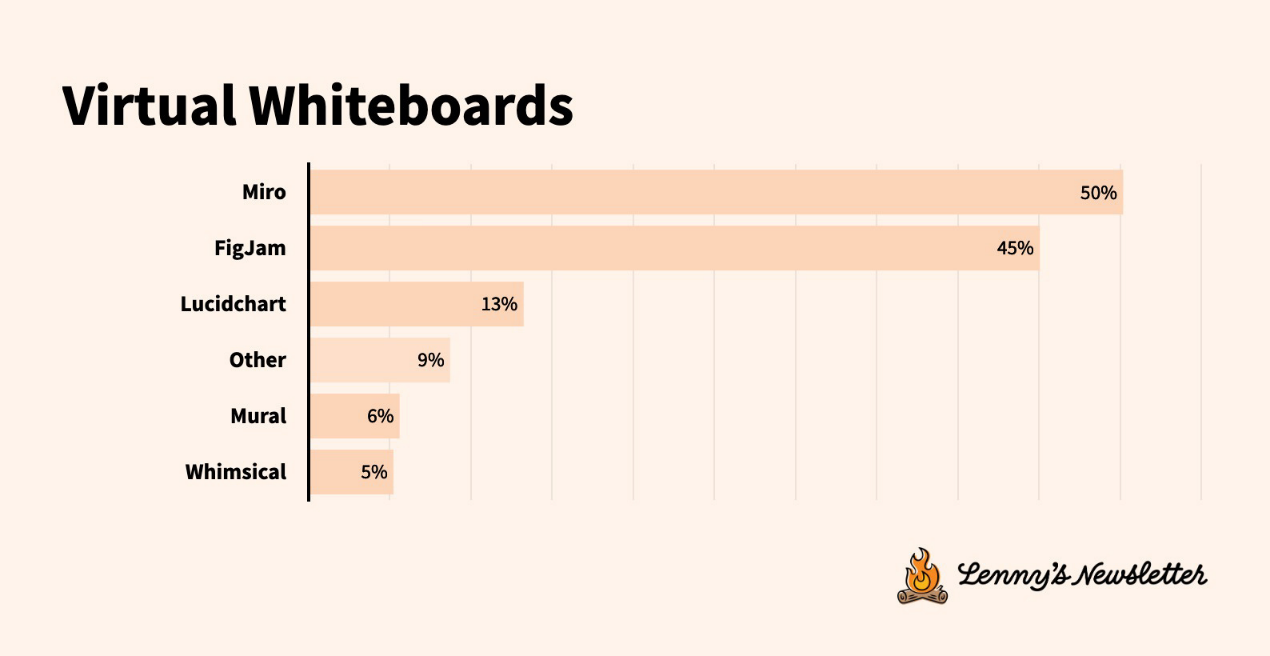
Notion and Slack Are Surprising Players in CRM and Customer Support
Two companies dominate the CRM space, but an unexpected entrant has emerged in this market.
Salesforce's comprehensive enterprise features make it the default choice for large organizations, but an increasing number of small companies are expressing dissatisfaction with its complexity and cost structure. This creates opportunities for alternatives that emphasize simplicity and specific use cases.
HubSpot fills this market gap, especially among small and medium-sized enterprises. Respondents report that HubSpot is more intuitive and streamlined than Salesforce, allowing teams to use it even without dedicated CRM experts.
But then an unexpected finding emerged. 11% of respondents chose Notion as their preferred CRM. According to the results, flexibility is key to its success: "Notion provides our team with a lot of flexibility, which may be the hardest to replace."
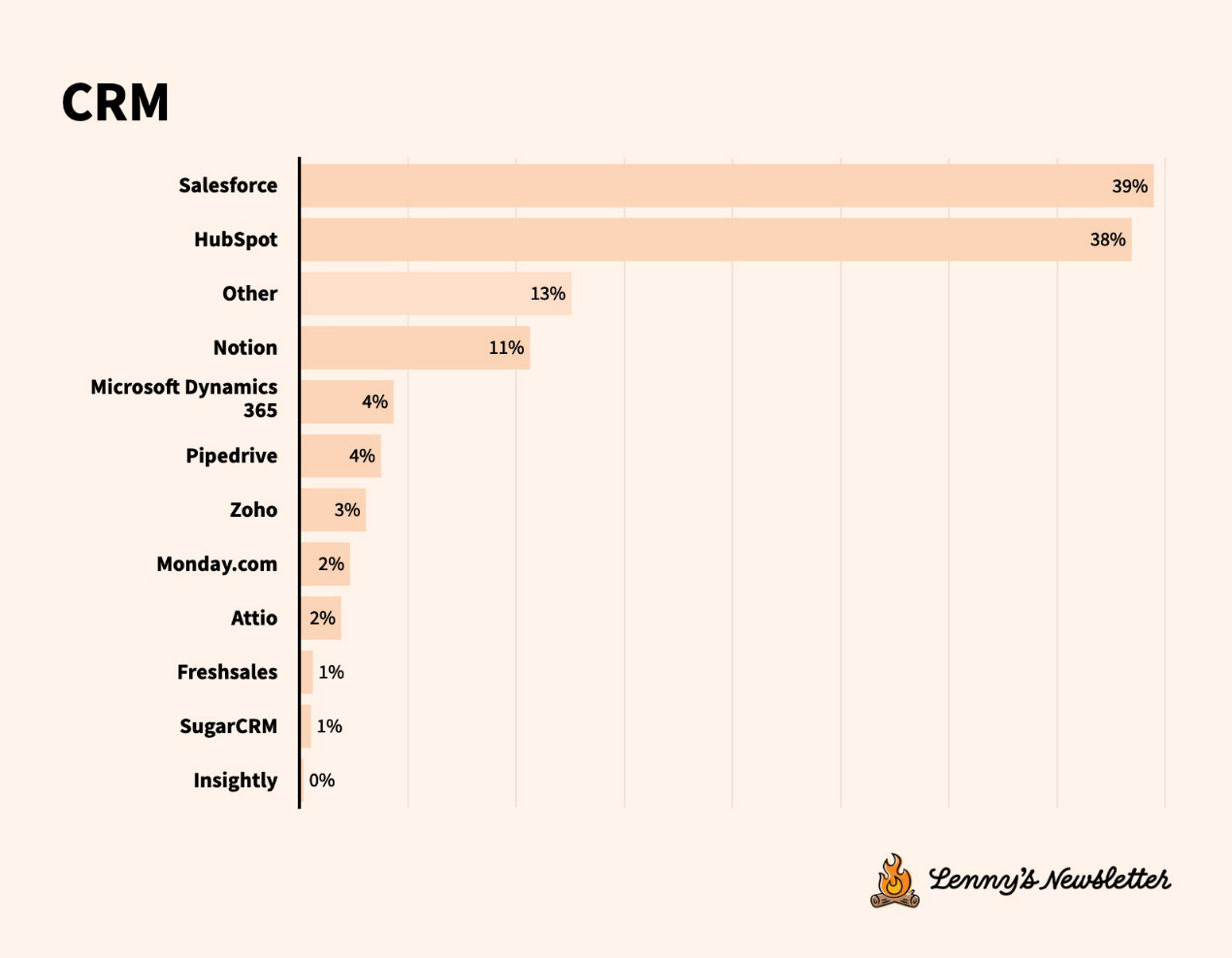
The customer support tool space shows a similar pattern of established leaders, with Zendesk maintaining its position as the primary support platform, accounting for 29%.
Interestingly, Slack also holds a 29% market share. Why?
It is hypothesized that the respondents in this survey lean towards early-stage companies. Slack is essential, while Zendesk or Intercom are both expensive and complex.
Slack allows you to create an external shared channel for each customer or design partner, enabling co-founders or early employees to communicate directly with their clients. This insight reveals another variable behind Salesforce's decision to acquire Slack for nearly $30 billion a few years ago.
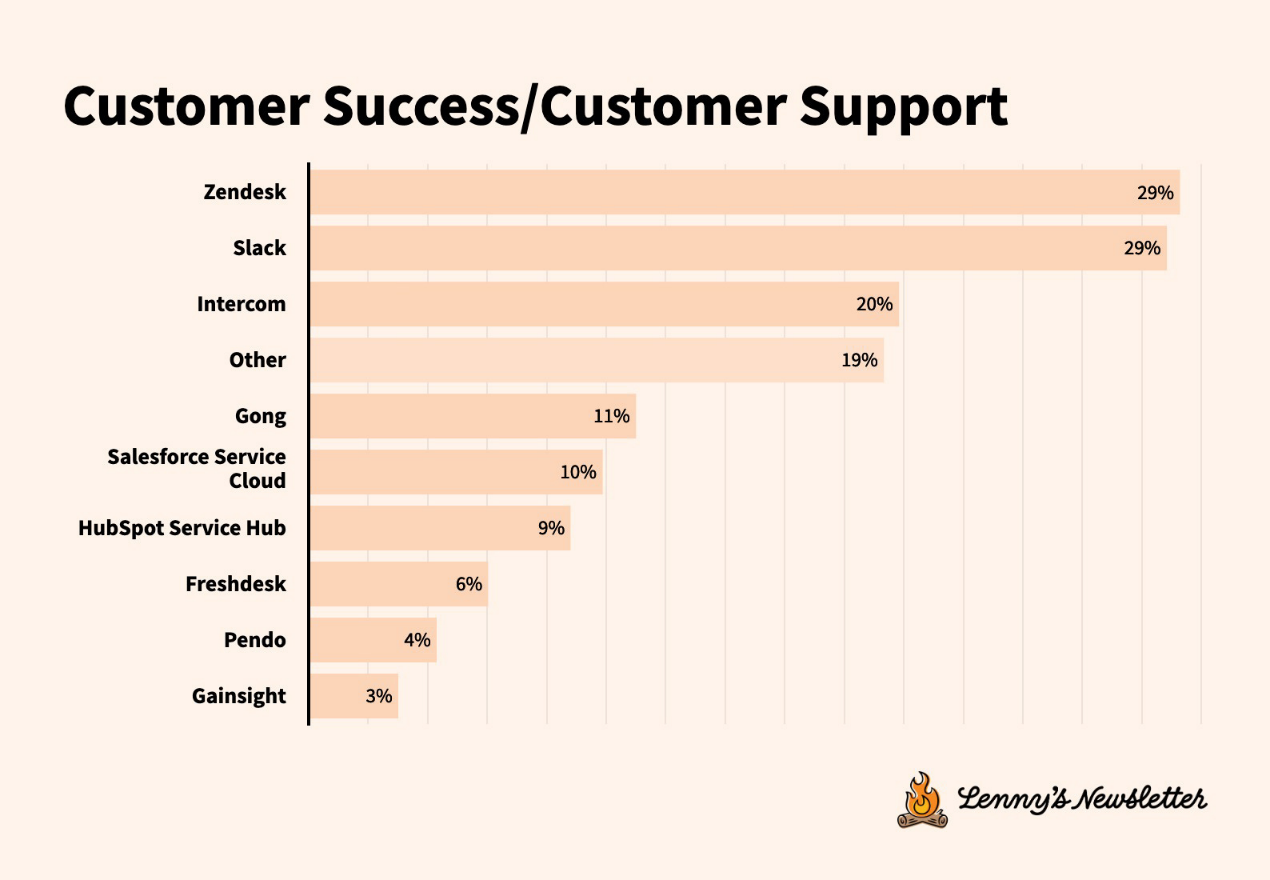
Three Key Points: Bundling, Thoughtful Design, and Mixing Tools
1. Bundling is Powerful but Has Limited Impact
Some of the most commonly used tools, such as Jira, Microsoft Teams, and Google Slides, are bundled within their respective enterprise stacks, which locks users in for the long term and creates significant switching costs. Due to bundling, they ultimately "win," but some of these products rank at the top of the "least liked" and "most wanted to switch" lists. Therefore, it may just be a matter of time before some better-designed, more effective startups (like Linear and Figma Slides) find a breakthrough and gain an edge.
2. Well-Built Products are Disrupting Existing Offerings
Linear, Notion, Figma Slides, and Slack are praised for their user experience, workflow fit, and focus on a perfect feature set. They are rapidly rising (or have already won) and are the preferred choices for respondents looking to switch.
3. Mixing Different Tools in the Same Domain
When examining the tool stack landscape more comprehensively, it becomes evident that for core work, users will utilize several (competing) tools within the same category based on their needs. For example, most respondents use multiple AI assistants according to each assistant's strengths.
Tools People Value Most and What They Would Give Up If Possible
In the survey, respondents were asked to select up to three tools they value most and least, with the expectation that there would be no overlap between the two selections. However, the results were skewed, with tools like Slack, Jira, and even ChatGPT frequently mentioned in both lists, indicating a need for a better metric to capture the value of tools while considering two key factors:
- The overall frequency with which a tool is chosen.
- The frequency with which a tool is listed as least valued, aside from the most valuable tools.
The survey adjusted rankings based on the ratio of general popularity to most valuable and the ratio of most valuable to least valuable, penalizing tools that ranked high on both lists. This ultimately resulted in an "adjusted most valuable" metric.
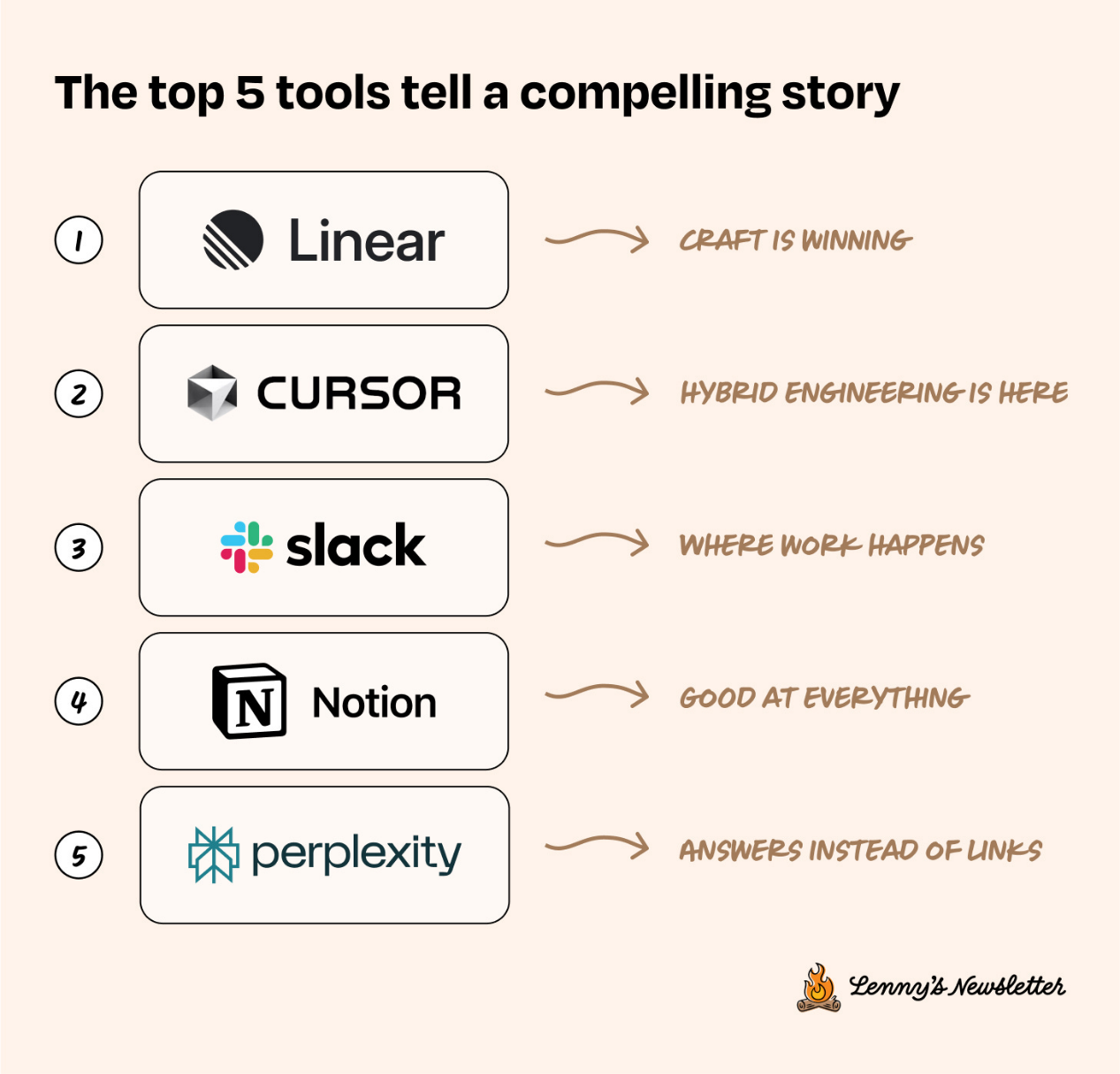
Linear: Thoughtful Design is Winning
Respondents appreciate Linear for its user experience, workflow compatibility, and relative simplicity and focus compared to Jira.
Cursor: The Future of Software Development is AI Native
Cursor is rising at an astonishing pace, with at least five other AI-native coding platforms. Over 20% of engineers are already relying on Cursor, which surpasses most traditional coding tools like JetBrains, IntelliJ, and even Xcode.
Slack: The Place to Work
When it comes to Slack, it's not all love. Slack ranks high on the "most valuable" list but also appears prominently on the "least valuable" list. Users heavily rely on Slack for communication, but some also view it as a productivity killer. Some respondents describe it as "adding a significant cognitive load" and a "noise generator." Nevertheless, in an era of increasingly rapid communication, Slack is the place to get work done.
Notion: Everything is Good Enough
There is a new batch of modern tools. Notion stands out as a new type of tool that prioritizes collaboration, intuitive design, and the flexibility to complete a range of tasks, from documentation to project management to collaboration.
Perplexity: Providing Answers Instead of Links
Beyond the popularity of ChatGPT and Claude, the ranking of Perplexity in the top five indicates an important point: AI tools are no longer just shiny toys; they are changing workflows, replacing mature tools (like Google), and becoming essential tools for the workday.
"Tools Most Wanted to Replace" List
The survey also asked respondents which tools they most wanted to replace and which tools they most wanted to use.
People seem to view Linear, Slack, and Notion as the modern stack for project management, communication, and collaboration. Atlassian's Jira and Confluence performed poorly, as did Microsoft Teams.
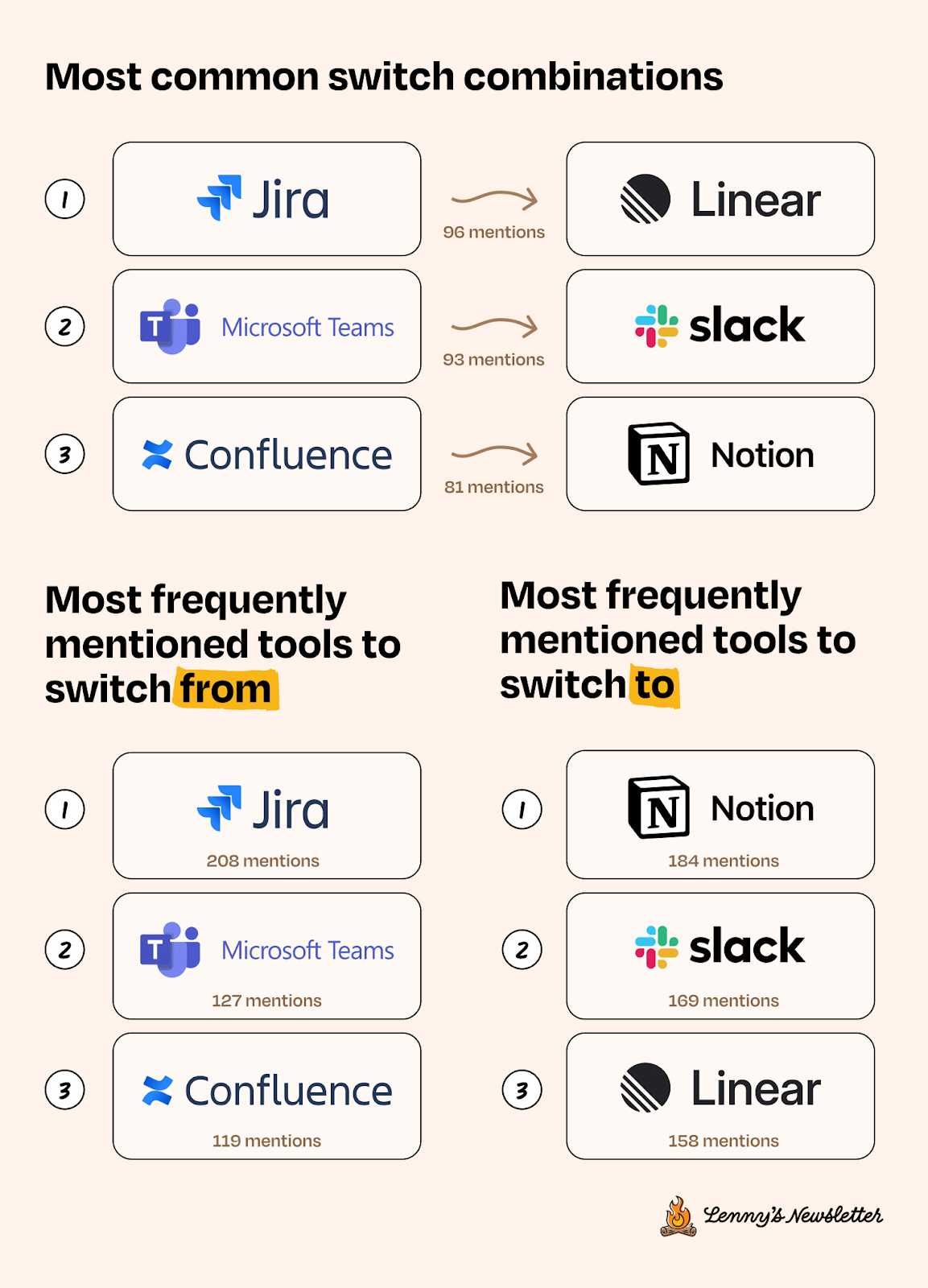
Other Key Insights: User Research, Analytics, Email
1. User Research
Survey Tools Recognized
Google Forms dominates, especially among PMs, likely due to its simplicity, comprehensive features, and bundling with Google Workspace.
However, Typeform is the perfect tool for reimagining outdated formats. With a richer feature set, a less traditional approach, and a more thoughtfully designed interface, it ranks third among user research tools.
User Interviews Will Change the Recruitment Landscape
User Interviews has climbed to second place by addressing one of the biggest challenges in research (finding the right participants). Think about it: what good is a perfect research plan if you can't find suitable participants? Respondents love User Interviews because it transforms the cumbersome process of finding, scheduling, and paying participants into a manageable one.
Professional Teams
A host of professional tools are changing the way teams understand users:
- UserTesting still dominates the usability space.
- Qualtrics handles enterprise-level customer experience research.
- Dovetail excels in insights management.
- Maze makes research simple and quick.
- Sprig is a product experience platform that is always online.
- Optimal Workshop addresses information architecture issues.
- Dscout offers diary and longitudinal studies.
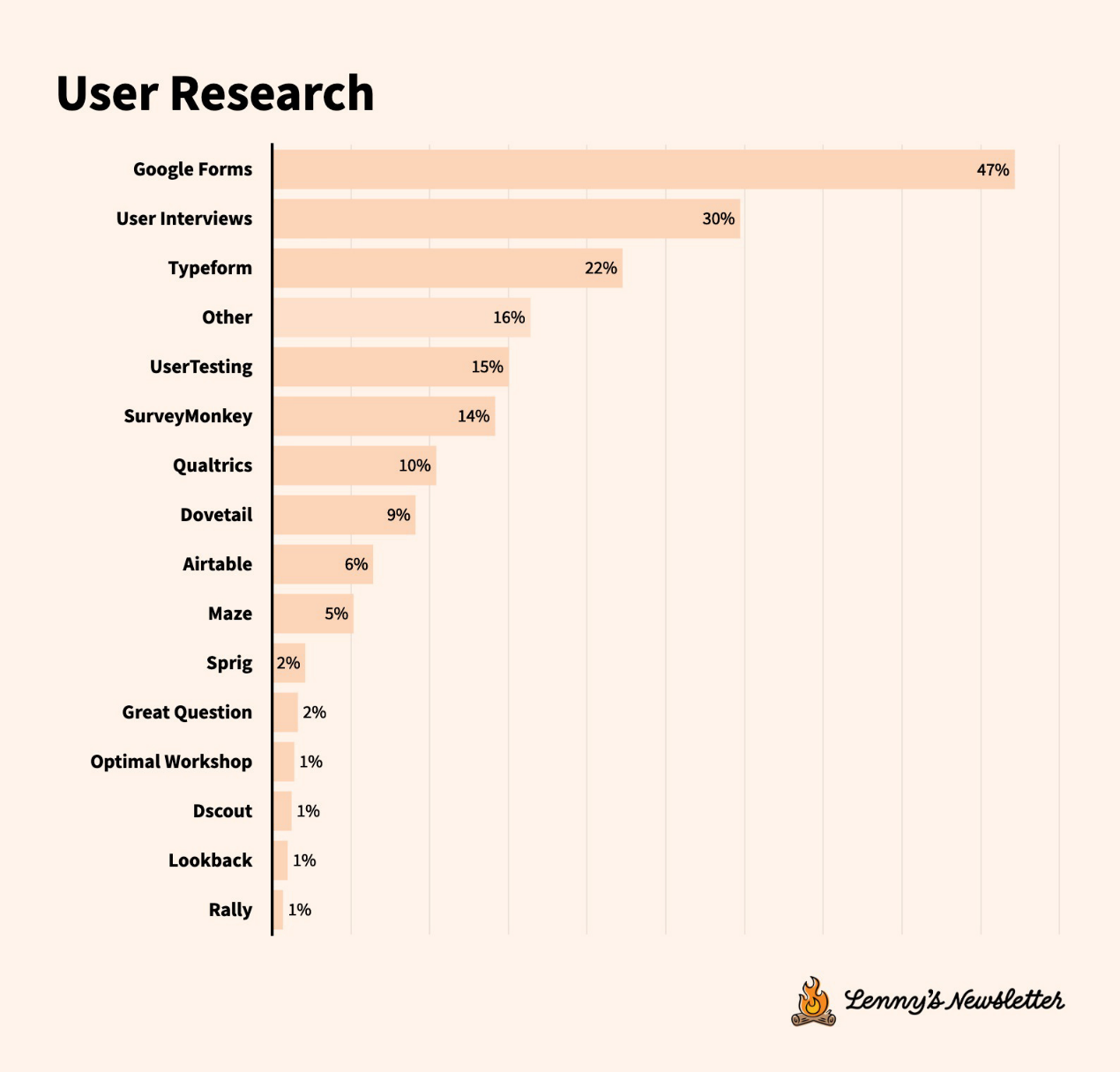
2. Analytics
The data analytics landscape in 2025 tells a David vs. Goliath story, or more accurately, several Goliaths versus a group of Davids.
Google Analytics remains the undisputed leader, dominating general analytics. Interestingly, a thriving ecosystem of specialized tools is carving out its own territory.
Power Players
When teams need to elevate their business intelligence, they increasingly turn to two main players:
- Tableau: A platform that simplifies complex data into compelling dashboards.
- Looker: A favorite among data scientists, Looker is helping companies achieve data democratization.
Behavior Tracking Favorites
Amplitude and Mixpanel remain the two largest analytics companies after Google Analytics, helping teams track everything from user behavior to feature adoption.
Carving Out Their Own Niches
Highly specialized tools are on the rise:
- Hotjar dominates the qualitative space with its heatmaps and session recordings.
- Metabase has become a favorite among startups, offering quick, practical dashboards.
- Pendo has a wealth of product feedback.
- Segment is the go-to for data management.
- Fullstory and Heap are gaining fame in behavioral data collection.
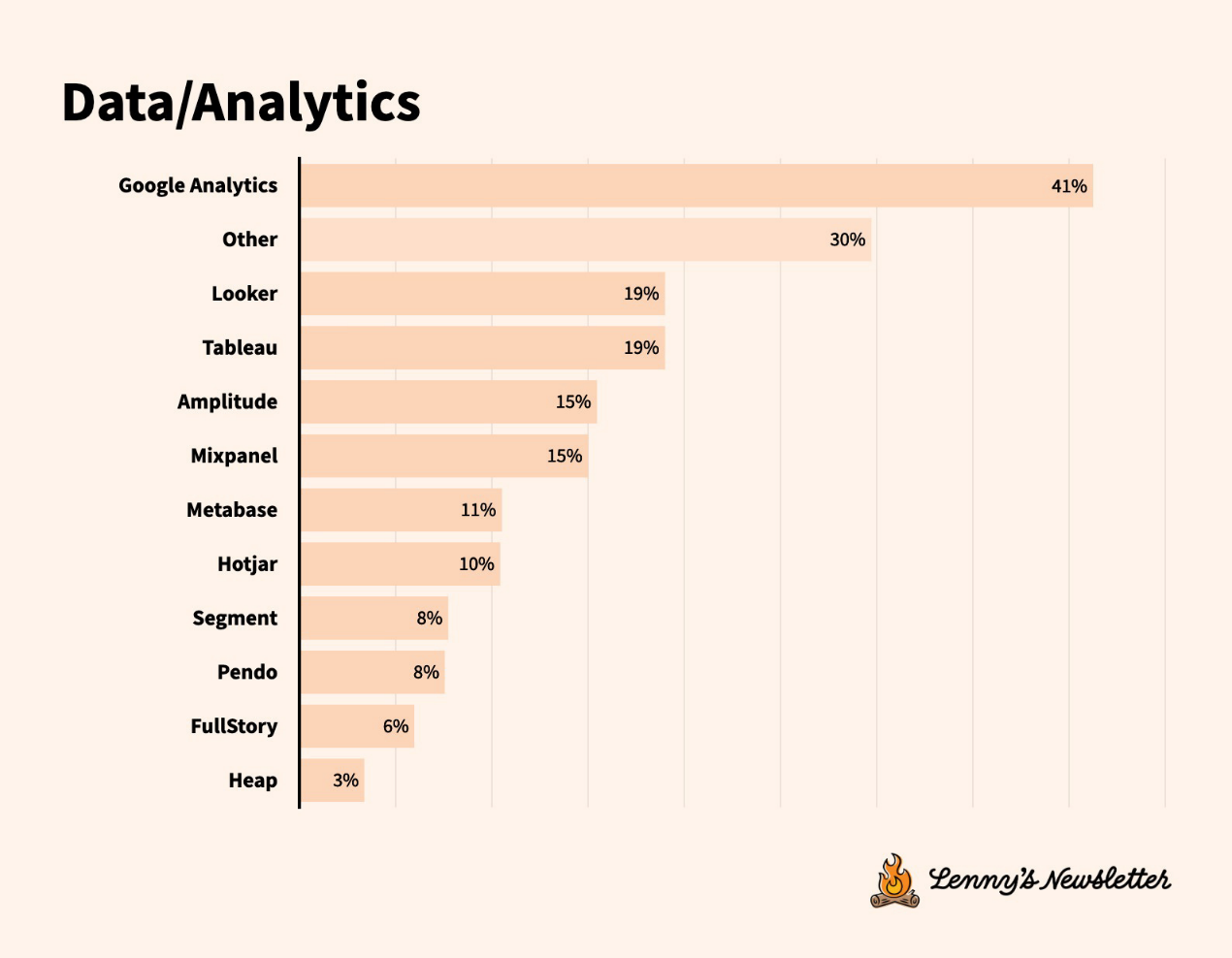
30% of respondents fell into the "other" category. The two leading platforms each received about 200 responses, making it a close contest:
Posthog: An open-source integrated platform competing with big players like Amplitude, Mixpanel, Fullstory, and Heap.
Power BI: Microsoft's response to Salesforce's Tableau and Google's Looker. Data analytics, visualization, dashboards… typically the default choice for companies using the Microsoft stack.
3. Email: Three Camps
Email is essentially divided into three categories:
- Gmail
- Microsoft Outlook
- Dedicated tools for power users
Gmail ranks second in overall tool popularity, trailing only ChatGPT but ahead of Slack and all other email tools. Additionally, throughout the survey, Google Workspace received significantly higher ratings than Microsoft Suite.
Microsoft still maintains its enterprise status, but the satisfaction gap is widening. Their tools frequently appear on the "least liked" rankings, as one respondent noted about Outlook, "Everything about Outlook feels corporate and soulless compared to Google Suite, but corporate inertia keeps us stuck with this tool."
Power users tend to gravitate towards specialized tools like Superhuman and Front, which remain relatively niche, but users report significant productivity improvements, justifying the higher costs.
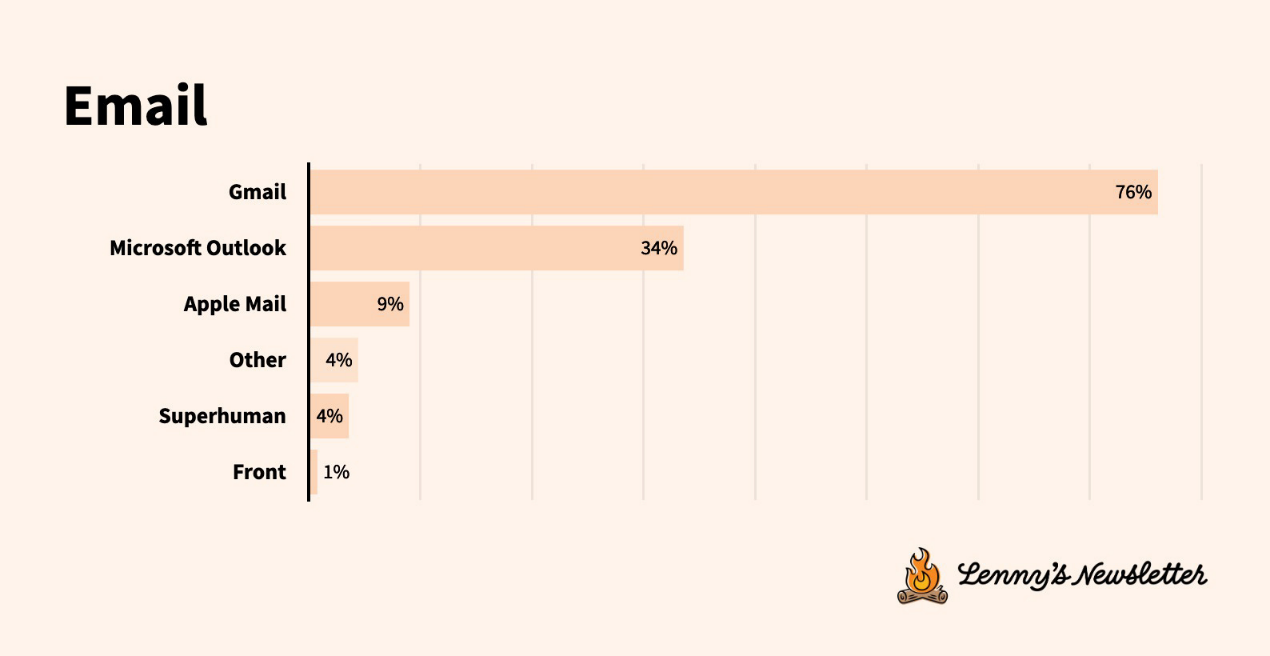
Overall Situation
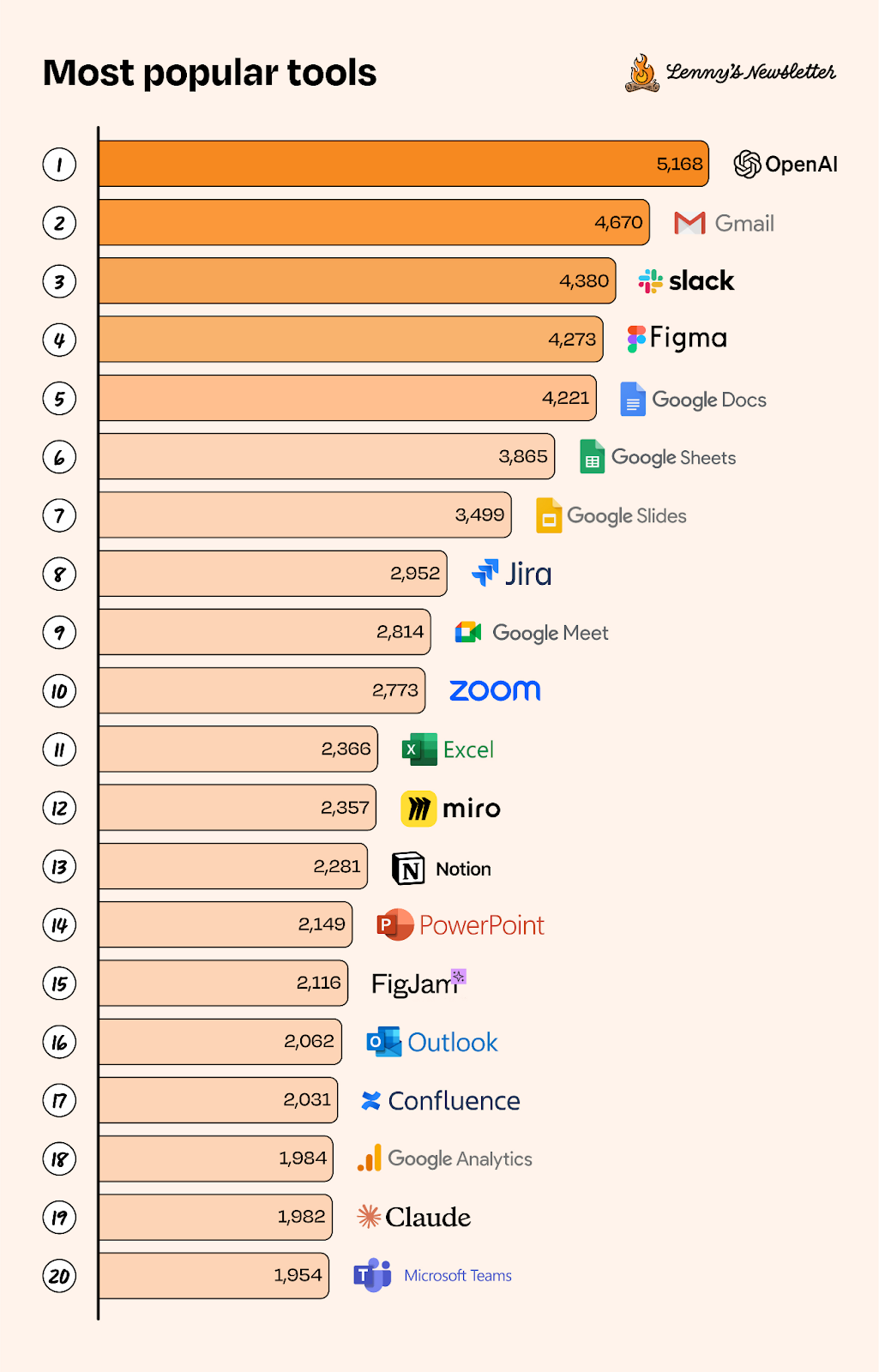
When observing this data as a whole, several important trends become clear. First, AI is not just a new normal; it is ubiquitous. Teams are not just leveraging AI; they are building entire workflows around it. ChatGPT not only stands out but also dominates. Respondents indicate that ChatGPT serves a dual purpose: it expands their thinking during brainstorming or ideation and simplifies key workflows like data analysis or writing.
Another recurring theme is that user experience is more important than functionality when choosing tools. Teams are increasingly willing to sacrifice deep functionality for truly usable tools. Tools like Linear, Notion, Slack, and Figma are praised for their thoughtful design and flexibility.
This may explain why we are seeing an acceleration in tool migration. There is a strong negative sentiment towards tools that do not meet modern stack standards, and a strong willingness to switch from old tools to modern alternatives. The impact of bundling strategies is limited, and well-crafted tools are capturing market share.

Savvy teams and individuals will mix and match various tools within the same domain, selecting the most suitable tool for each nuanced context or need.
One thing is clear: tech professionals will always be on the lookout for better tools.
Related Reading: Beginner's Tool Guide | 9 Crypto Tools to Help Identify Potential Projects
免责声明:本文章仅代表作者个人观点,不代表本平台的立场和观点。本文章仅供信息分享,不构成对任何人的任何投资建议。用户与作者之间的任何争议,与本平台无关。如网页中刊载的文章或图片涉及侵权,请提供相关的权利证明和身份证明发送邮件到support@aicoin.com,本平台相关工作人员将会进行核查。




